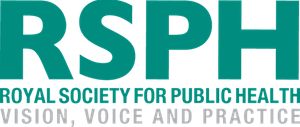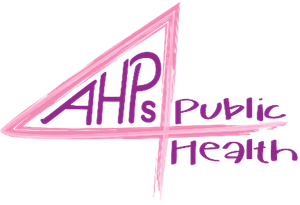

Description
Case history taking is the first line of contact we have with our patients and sets the scene for open conversation. As Orthoptists, we often focus on specific medical-related questions which enable differential diagnosis and management. However, to Make Every Contact Count (MECC) we should be giving patients the opportunity to raise wider health concerns (physical, mental or social) so we can signpost to support services. Due to the COVID-19 pandemic, face to face contact has been kept to a minimum with patients often feeling rushed or confused without opportunity to have a conversation with healthcare professionals. A recent study showed 80% of patients reported a decline in their mental, social and physical health throughout the pandemic.1 It therefore raises the question of the best method to gather enough information to ensure MECC can be utilised for all patients within their allocated appointment time in the outpatient environment. In this case study, a pre-consultation public health questionnaire designed to focus on wider patient well-being is proposed. This case study is a prospective review and a follow-up report will be published with recorded outcomes of the service evaluation.
Introduction and Context
A conventional case history typically takes the form of a 5–10 minute conversation at the beginning of the consultation involving closed questions directed to the patient, often focused on specific ocular symptoms. As part of a proposed service improvement, a pre-consultation questionnaire will be implemented to gather wider public health information before seeing the patient. The aim is to keep the questionnaire informal and non-invasive whilst giving patients the opportunity to voice any wider health concerns including mental health and quality of life as part of MECCs. We have also developed ‘business card’ style leaflets with targeted public health information which can be given to the patient dependent on the questionnaire responses. The questionnaire has been designed specifically for the service improvement, using a similar style to pre-existing, validated public health questionnaires.2 Kobashi et al showed that 64% (n=46) of patients with a nerve palsy had 2 or more modifiable risk factors such as diabetes, hypertension, hyperlipidemia, smoking, alcohol abuse, depression and obesity.3 Furthermore, patients with mental health disorders had an increased risk of accommodation and convergence anomalies which decrease quality of life.4 There are also studies which show substance and alcohol use can exacerbate myasthenia gravis and decompensate heterophorias which leads to diplopia.5 These risk factors can be identified via the questionnaire and additional information, via the business card model, can be given to the patient to enable education and access to support services.
Promoting MECC and supporting public health education is a key aim of this service improvement and aligns with the NHS Long Term Plan.6 However, a secondary aim is to use the standardised data collected from the questionnaires to improve the department’s understanding of the patient demographic within the outpatient clinics. This allows resources, clinic support services and staff training to be tailored to the patient demographic. Once the service improvement is implemented, a follow up report will be published where the responses will be audited and any further service improvements proposed as a result of the questionnaire will be presented.
Method
The questionnaire is proposed as a service improvement at Stepping Hill Hospital. The questionnaire was used for patients aged 18 and over attending for an Orthoptic-only appointment. Nine Orthoptists agreed to take part in the service improvement. The questionnaire included 9 closed questions with Likert scale or multiple-choice, as seen in Figure 1. The final comment on the questionnaire is for staff to document if any MECC information was given and if so, for what area of public health. This will be audited to explore if the questionnaire resulted in an uptake of MECC information. Informal verbal consent was required before completing the questionnaire and identifiable patient information was anonymised. The questionnaire did not form part of the patient record once complete. The questionnaire was designed to be completed prior to the Orthoptic assessment and should take no more than 5 minutes to complete. The questionnaire responses were reviewed in conjunction with a full Orthoptic assessment. At the end of the consultation, the patient was offered information signposting wider support networks, depending on the question responses. The MECC information was gathered from a range of validated websites and charities. Figure 2 shows an example of the patient information leaflet. The leaflets are available for 21 areas of public health support, ranging from stop smoking services to dementia groups. The questionnaire is available in accessible formats. Visually impaired patients were offered the choice of having the questionnaire in larger font or having the questionnaire read aloud to them. At the end of the 3-month trial the questionnaire responses will be audited and results included in the retrospective case study.
Outcomes
As this is a prospective case study no results have been collected. A retrospective, follow-up case study will be presented to gauge the number of participants who were able to access further support or information as a result of the public health questionnaire being used as part of the Orthoptic case history. The questionnaire has been developed specifically for this project and therefore it has not been peer reviewed. As a result, a focus group style verbal discussion including administrative staff, Orthoptists and patients allowed for some initial feedback before the questionnaire was rolled out:
- “I feel the questionnaire gives patients opportunity to raise wider health issues without the anxiety which can be inflicted with face-to-face conversation.” Orthoptist
- “It may add to patient stress before their consultation, particularly if the patient arrives late.” Clinical administrator
- “Due to the nature of our patient demographic some patients may not be able to access the questionnaire in text/written format due to visual impairment.” Specialist Orthoptist
- “I feel like I didn’t have a chance to tell anybody how I was feeling after my stroke, any opportunity to access wider support or information is great.” Stroke patient
Comment 1 identifies a good point which was a driver for implementing the public health questionnaire. The questionnaire reduces both patient and clinician anxiety which surrounds starting healthy conversations around sensitive topics. Furthermore, having structured information to hand ensures a proactive approach to public health. The patient can choose what they wish to disclose via the questionnaire rather than being questioned directly which may discourage attendance at future appointments.
In response to comment 2, it is important the questionnaire is not viewed as a ‘compulsory’ part of the patient assessment: healthy conversations are a patient choice.
Comment 3 raises a valid argument; if the implementation of the questionnaire is successful, the aim is to make the questionnaire accessible in different formats for all patients such as online or braille format. This relates to the wider effort required to ensure that MECCs and public health initiatives are accessible to all patients within the healthcare setting.
Key learning points
- Case history taking offers a good ‘ice breaking’ environment where you can start healthy conversations from the outset. Providing a short questionnaire focused on general physical, mental and social health empowers the patient to guide the conversation.
- Our role is not to counsel but to listen and signpost appropriately. It is important that we respect when patients do not want to take part.
- The questionnaire is not intended for new patients only and therefore could be offered at a follow up appointment. The questionnaire can also be repeated.
- The service could be improved significantly if a pre-consultation questionnaire could be sent out via online links and other accessibility formats prior to the patient attending the hospital. The aim is for the questionnaire to take less than 5 minutes to complete.
- The literature and NHS Long Term Plan supports early signposting and prevention. This can improve recovery period of ischemic palsies, lower risk of recurrent palsies, better mobility due to cardiovascular health and lower risk of falls. Supporting public health and MECC reduces the likelihood of inpatient admissions beyond the eye clinic.
- Case history is often overlooked and condition-specific, further standardisation allows us to understand the needs of our patient demographic on a public health scale.
- As a department we are working to improve the scope of the ‘business card’ style services offered. Currently there are contact details for public health concerns such as smoking, financial support and gambling addictions. Having contacts to hand means you can act on the concerns raised via the questionnaire proactively and patients feel supported.
- A follow up case-study will be released following implementation of the questionnaire after a 3 month period. Auditing the responses will allow us to understand outpatient cohort and further support their needs.
References
- Chudasama et al. Impact of COVID-19 on routine care for chronic diseases: A global survey of views from healthcare professionals. Diabetes Metab Syndr 2020;14(5):965–967.
- Goldberg DP et al. Manual of the General Health Questionnaire. Windsor, England: NFER Publishing, 1978.
- Kobashi et al. Clinical Studies of Ocular Motility Disturbances: Part 2. Ischemic Ocular Motor Nerve Palsy Risk Factors. Jpn J Ophthalmol 1997;4:115-119.
- Mitchell G et al. Evaluation of ‘Dementia Friends’ programme for undergraduate nursing students: Innovative practice. Dementia 2017; 16(8):1075-80.
- Peragallo J et al. Ocular manifiestations of drug and alcohol abuse. Curr Opin Ophthalmol 2013;24(6): 566–573. doi:10.1097/ICU.0b013e3283654db2.
- Alderwick H, Dixon J. The NHS long term plan. BMJ 2019; 7: 364.
